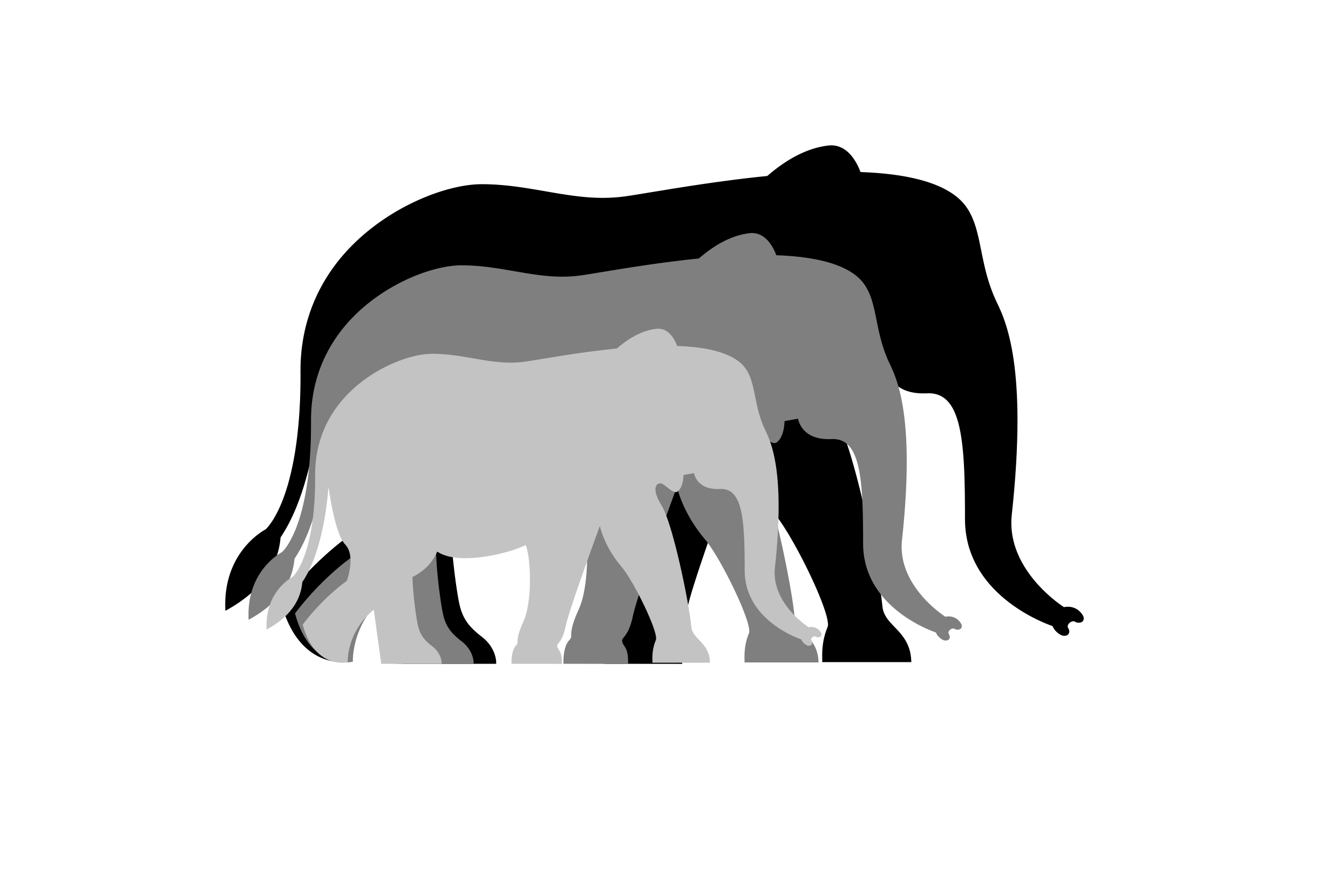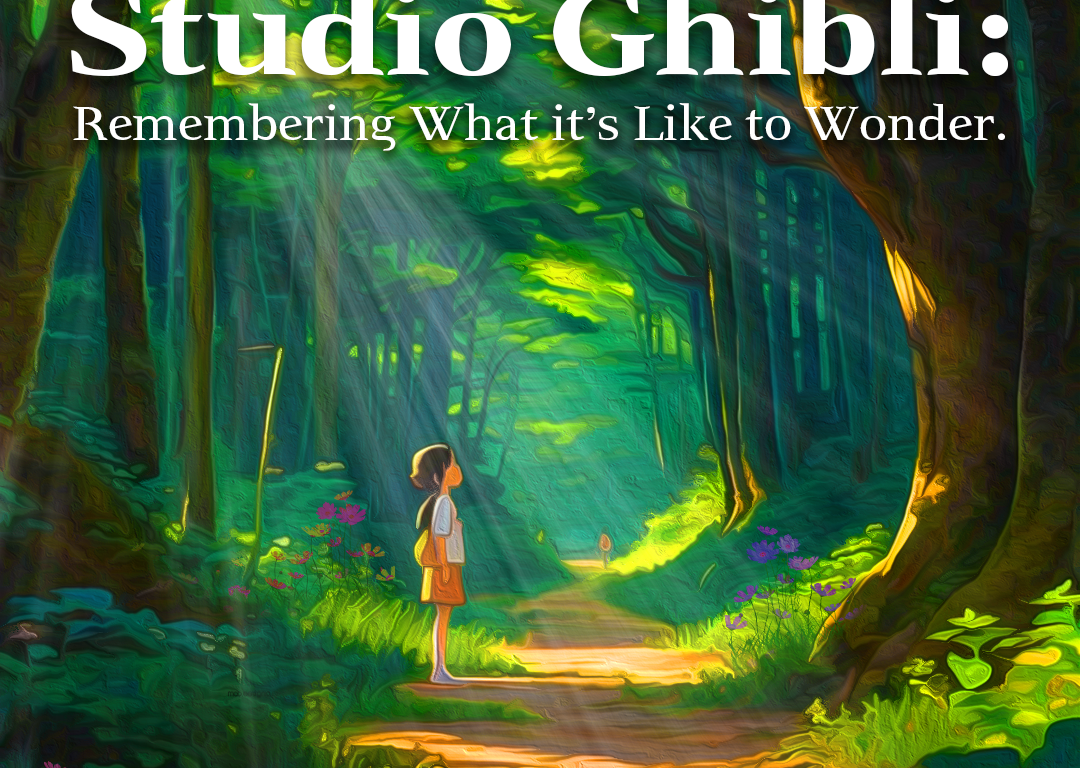When you think of animation that transcends mere entertainment, invoking a sense of wonder and nostalgia, where you just get that feeling, that feeling, you remember what it’s like to be five years old, one name stands above the rest: Studio Ghibli. This Japanese animation studio, founded in 1985 by directors Hayao Miyazaki and Isao Takahata, has created some of the most beloved animated films in cinematic history. Studio Ghibli’s uniqueness lies in its meticulous hand-drawn animations, deep storytelling, and richly detailed worlds that capture the imagination of both children and adults alike.
Films like Studio Ghibli’s have a sort of enigmatic sense of capturing that childlike wonder. It’s not nostalgia to be particular, but more of a sense of how we used to be, how we were when the world was full of magic, and tomorrow was a long way away. The inception of the studio traces back to the success of “Nausicaa of the Valley of the Wind” (1984), directed by Miyazaki. Though technically not a Ghibli film, its success laid the groundwork for what would become Studio Ghibli. With the ocial establishment of the studio, Miyazaki and Takahata embarked on a journey to create films that would stand the test of time. Their philosophy was simple yet profound: to craft hand-drawn animations that evoke deep emotional connections, focusing on storytelling that was both imaginative and grounded in reality.
In an age where computer-generated imagery (CGI) dominates, Studio Ghibli remains a bastion of traditional hand-drawn animation. Miyazaki’s staunch belief in the power of hand-drawn art reflects his commitment to capturing the subtleties and nuances of human experience. This painstaking process ensures that every movement, every expression, and every fluttering leaf feels alive and full of soul, adding a personal touch that CGI often lacks. Miyazaki has famously stated, “I will never apply AI art to my work; the art form is an insult to life itself.” He also remarked that someone who eats instant noodles three times a day cannot be an animator, emphasising that careful observation and real-world experience are key to bringing animation to life.
Watching Ghibli films invoke a lot of the same butterflies we felt when we were kids, wondering what the world was like just behind that fence, or just beyond that tree. But as we grow up and leave these feelings behind in favour of rationality and realism and logic, I feel like it’s not just the wonder of childhood, but as if a part of ourselves withered with it. The films allow us to reach back into ourselves and find the world we left behind, back when nothing made sense, but we didn’t really care. Ghibli films are often perceived as whimsical fairy tales, but they are much more than that. They are complex narratives filled with strong, relatable characters and profound themes. Take “My Neighbor Totoro” (1988), for example. On the surface, it’s a story about two sisters discovering magical creatures in the forest. However, it also deals with themes of family, illness, and the innocence of childhood. Similarly, “Spirited Away” (2001), which won an Academy Award for Best Animated Feature (often considered the studio’s magnum opus), is a coming-of-age story that explores themes of identity, consumerism, and the spirit world.
One of the hallmarks of Studio Ghibli films is their strong, independent characters, particularly women. From Nausicaa to Chihiro, Ghibli’s heroines are brave, resourceful, and determined. They defy the traditional damsel-in-distress trope, and tend to be the masters of their own fate, oering young viewers role models who are as capable as they are kind. These characters are not flawless; they grow and learn, making them all the more relatable.
While Ghibli’s heroines often receive the spotlight, the male characters are nothing short of exceptional (setting the standard?). For instance, Ashitaka in “Princess Mononoke” (1997) embodies courage and empathy, while Howl in “Howl’s Moving Castle” (2004) demonstrates complexity and growth, transforming from a self-absorbed wizard into a hero willing to sacrifice for love. These male characters, much like their female counterparts, are deeply layered and contribute significantly to the rich narratives of Ghibli films.
A concept intrinsic to Japanese culture and beautifully employed in Studio Ghibli films is “Ma,” the time between moments. This negative space is not a void but an active presence that shapes our perception of the world. Ghibli’s use of “Ma” creates moments of reflection, allowing viewers to breathe and process what the characters have just experienced. This is evident in the tranquil scenes of “My Neighbor Totoro,” where the rustling of leaves, the sound of wind, and the play of light through the trees (known as “komorebi”) create a dreamlike atmosphere. These empty moments are filled with sensory details that invite viewers to connect more deeply with the story and its characters.
Studio Ghibli finds beauty in shadows, guiding them towards the end of beauty, an aesthetic choice profoundly illustrated in the contrasting homes of the twin sisters in “Spirited Away.” Yubaba, the malevolent head of the bathhouse, resides in a lavish, baroque apartment filled with ornate decorations and intricate details that symbolise her greed, power, and insatiable desire for control. The opulence of her surroundings, with its extravagant furnishings and dark, looming shadows, creates an atmosphere of intimidation and excess, perfectly reflecting her domineering and avaricious nature.
In stark contrast, Zeniba’s humble cottage is modelled after a traditional Irish farmhouse, exuding warmth, cosiness, and unpretentious simplicity. Her home, bathed in soft light and surrounded by natural beauty, is filled with rustic, handmade items and modest decorations that speak to her kind, grounded, and benevolent character. This environment is inviting and nurturing, embodying a sense of peace and contentment that starkly opposes Yubaba’s world of excess. Miyazaki’s meticulous attention to these environmental details provides deeper insight into the characters, making their personalities and moral alignments vividly clear. This thoughtful and deliberate use of setting extends to every aspect of Ghibli’s worlds, making them feel alive, immersive, and deeply connected to the characters who inhabit them.
Ghibli is known for disregarding conventional age ratings. The studio’s films transcend the notion that animated storytelling is meant for specific audiences. Instead, they focus on crafting deeply imaginative tales that captivate viewers of all ages. For example, “Castle in the Sky” (1986) is built around an ancient legend introduced at the outset. While it includes comical moments and characters, it also embraces the epic, the ancient, and the sinister, creating a narrative that is as engaging for adults as it is for children.
The music in the films is another element that sets them apart. Often grand, touching, and eective, the scores are predominantly orchestral, giving a sense of scale to the visuals. The use of multiple instruments playing together creates a powerful collective feeling that enhances the emotional impact of the scenes. For example, in “Howl’s Moving Castle” (2004), Joe Hisaishi’s score is a masterful blend of sweeping orchestral pieces that perfectly capture the film’s magical and adventurous spirit. The waltz-like theme, “Merry-Go-Round of Life,” uses lush strings and woodwinds to evoke a sense of whimsy and grandeur, seamlessly interacting with the film’s imagery. Notably, the music is instrumental rather than vocal, which allows it to interact more with the imagery and the film itself rather than the audience. This choice grounds the scenes in reality and adds more meaning to the characters’ voices, avoiding the theatricality that singing might bring.
Ultimately, what makes Studio Ghibli films truly magical is their ability to capture the wonder of childhood while addressing deeper, often complex themes. They invite us to see the world through a child’s eyes again, to find beauty in the mundane, and to appreciate the moments of quiet and reflection. Our view of the world was only as big as our imagination. We wanted to be princes or princesses. We wanted to fly to the moon and to sail beyond the horizon. We wanted to, you know, find gold at the end of a rainbow. We dreamed of becoming mermaids and knights. This is why I love Ghibli films. They take you away, even for just a few hours and help you find something you lost a long time ago. You get to shed the pressures of adulthood, the need to explain everything with logic and reason, the need to think of the if-then statements of the world for a small, brief moment in time, you get to just be you.
As a devoted Ghibli enthusiast, I can attest that these films are more than just stories; they are experiences that stay with you long after the credits roll. They remind us of the beauty of simplicity, the power of nature, and the importance of empathy. In a world that often feels rushed and superficial, Studio Ghibli’s hand-drawn masterpieces oer a much-needed pause, a moment to reflect and reconnect with our own sense of wonder. So, if you ever need to escape the monotony of everyday life and rediscover the magic that once filled your heart, look no further than the world of Studio Ghibli.
“Life is a winking light in the darkness.” — “Grave of the Fireflies”
Associate Editor (2024-2025)
Amna Malik

